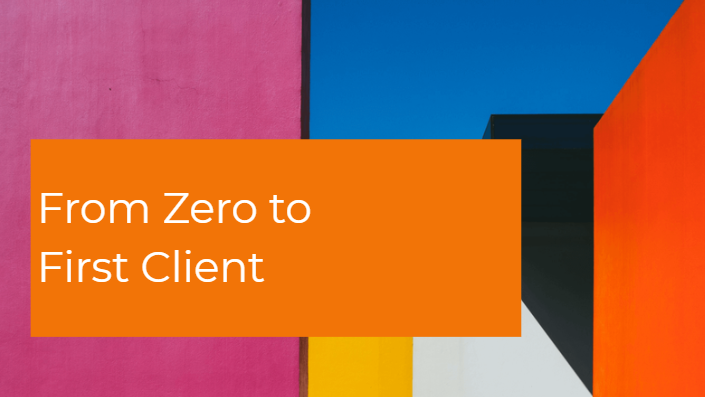No portfolio. No followers. No experience. Just a laptop, Wi-Fi, and a willingness to figure things out. If I had to start from scratch and land my first freelance client today—this is exactly what I’d do.
Step 1: Choose a Simple, Sellable Skill
You don’t need to be an expert. You just need to be one step ahead of someone who needs your help.
When starting out, it’s tempting to overthink your offer. Don’t. Choose one skill you can deliver confidently, even if it’s basic.
Here are examples of beginner-friendly services you can offer:
Social media post design (Canva)
Blog post writing or editing
Virtual assistance (inbox, calendar, spreadsheets)
Transcription or data entry
Basic website building (Wix, Shopify, Squarespace)
Simple video editing (CapCut, InShot)
Pro tip: Start with something you already know or enjoy—even if you’ve never been paid for it.
You don’t need ten skills. You need one clear offer.
Step 2: Create a One-Page Service Pitch
You don’t need a full website or fancy portfolio to start. You just need to be able to clearly explain:
What you do
Who you help
What result you deliver
How to hire you
You can do this in a:
Google Doc
Notion page
PDF
Or even a pinned post on LinkedIn/Instagram
Example:
I help small business owners write clear, engaging blog posts to boost traffic and build trust. $100/post. Turnaround: 4 days. DM me to book your first post.
Make it clear. Make it simple. Make it easy to say yes.
Step 3: Create 3 “Fake” Portfolio Samples
What if you’ve never worked with a real client before?
No problem. You don’t need experience—you need examples.
Create 2–3 sample projects as if they were for a real client. Think of them as mock-ups that show your style, skill, and potential.
Examples:
Design a fake Instagram carousel for a café
Write a blog post for a fictional wellness brand
Create a landing page for a pretend coaching offer
Don’t lie about client work—just make it look professional. Add a simple note:
This is a sample project created to showcase my skills.
This builds instant trust and gives people confidence in your work.
Step 4: Reach Out to 10 People Directly
This is the part most beginners avoid—but it’s the fastest path to your first client.
Make a list of:
People in your network (friends, family, ex-colleagues)
Small business owners you follow
Creators or coaches who look like they need help
Then send them a short, respectful message:
Hey [Name], I’m offering [your service] for a few early clients as I launch my freelance business. I’d love to offer you [discount or free trial]. No pressure at all—just let me know if that sounds helpful.
You’re not being salesy—you’re being proactive. Most freelancers wait for clients to come to them. You’ll stand out by going first.
Bonus: Even if they say no, they may refer someone else or respond later.
Step 5: Post About It Publicly
People can’t hire you if they don’t know what you do.
Make a simple announcement post on the platform where you’re most active:
Instagram
LinkedIn
Facebook
Twitter/X
Sample post:
🎉 I’m officially offering [freelance service]!
I help [target audience] with [what you solve].
I’m currently taking on 2–3 clients this month.
DM me if you’re interested or want more details!
Let’s build something together.
This builds credibility and visibility—and it lets your network support you.
Step 6: Overdeliver for Your First Client
Once you land that first client (even a small one), make them feel like they got the best deal ever.
Why? Because:
They’re your first testimonial
Their word-of-mouth matters
They help you build real-world confidence
What “overdelivering” looks like:
Being super responsive
Sending on time or early
Including a bonus (1 extra revision, a checklist, etc.)
Asking for feedback and using it to improve
Don’t aim for perfect—aim for professional.
Step 7: Ask for a Testimonial and Referral
Once the work is done, don’t just say thanks and move on. Ask for two things:
A short testimonial
“Working with Jacky was smooth, fast, and professional. Highly recommend!”
A referral
“If you know someone who might need [your service], I’d be so grateful if you passed my info along.”
This starts your referral engine—which will become one of your biggest growth drivers.
Step 8: Reflect, Improve, Repeat
After your first client, take 30 minutes to reflect:
What did I enjoy about the process?
What would I do differently next time?
What can I charge in the future?
Then improve your pitch, your process, and your pricing.
You’re now in business mode. And the best part? You’re no longer starting. You’re growing.
What I Would Not Do as a Beginner
Let’s keep it real. These are traps I’d avoid if I started today:
Waiting for everything to be “ready”
Spending weeks building a perfect website
Undercharging to the point of burnout
Trying to offer 5 different services
Comparing myself to pros with 10 years of experience
Start simple. Start small. Start now.
Final Thoughts
Getting your first freelance client is not about being the best.
It’s about showing up with a clear offer, creating trust, and asking.
No one gives you permission to start. You claim it by doing.
You don’t need a fancy degree. You don’t need 10,000 followers. You need:
One skill
One clear pitch
One person willing to pay for it
From there, you grow. You refine. You raise your rates. You build systems.
That first “yes” changes everything—because it proves you can do it again. And again. And again.


